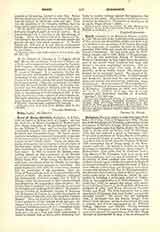

Ernst of Hesse-Rheinfels, landgrave, b. December 9, 1623, at Cassel; d. May 12, 1693, at Cologne. He was the sixth son of Moritz, Landgrave of Hesse-Cassel, after whose resignation of the government in 1627 to his son Wilhelm V, Ernst and his brother Hermann respectively founded the collateral lines of Hesse-Rheinfels and Hesse-Rotenburg. He figures prominently in the religious history of his country on account of the controversial literature called forth by his conversion to the Catholic Faith. Under the strict discipline of his mother his instruction in the principles of the Reformed Church received the utmost attention. After considerable travel he chose, in 1641, the military career. In 1642 he entered the Hessian army, proving himself an able commander of the Hessian troops who fought on the side of Sweden during the Thirty Years’ War. While visiting the Hessian General Geyso, who was in prison at Gesecke, he was himself arrested and taken prisoner to Paderborn. His social intercourse here with the royal army chaplain laid the foundation of his conversion. After the Peace of Westphalia he took up the government of his portion of Hesse. His desire to establish a collateral line independent of Cassel brought him in 1650 to Vienna, where his conversion to the Catholic Church was effected by the Augustinian Alfons Staimos. Before his formal reception into the Church, he returned to Rheinfels and challenged the Hessian theologians, George Calixtus of Helmstadt, Crocius of Marburg, and Haberkorn of Giessen, to a public disputation on certain points of doctrine, with the Capuchin Valerian Magnus. After the disputation the landgrave made a formal profession of the Catholic Faith and gave the reasons for his conversion in the work: “Conversionis ad fidem Catholicam motiva S. et C. Principis ac Dom. Ernesti Hassiae Landgravii” (Cologne, 1652). This work gave rise to a long and bitter controversy in which he himself took an active part, defending fearlessly in various writings against his opponents the course he had taken. His character as a prince is best described by himself in “Pourtraict ou description de la vie du Prince Ernest” (1669).
JOSEPH SCHROEDER

